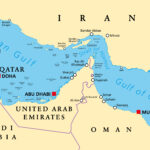Whether you study the growth curve in the “baby boomer” generation or generation “X” or “Y,” it is clear that we have a collision course of increased scope of risk, changing demographics, and growth in the hospitality industry. The scope of injury is obvious but the nature of injury and the dramatic impact to business income is underestimated.
Americans are enjoying the explosive growth of destination vacations complete with comfortable and picturesque facilities, pools, gourmet food choices, and a vast array of on premise activities such as golf, shopping and other things to do. These all-in-one dream destination resorts and hotels are on a collision course with increased scope of risk. Changes in the 2005 Food Code and its application to those facilities governed by the Code, coupled with state and local health departments, have set the stage for dramatic media events affecting business revenue nationwide. Norovirus has been added to the already daunting list of responsibilities to be controlled by food facilities and premises. The steady parade of dramatic cruise ship outbreak stories that continue regularly in the news is a view of what’s awaiting the hospitality industry in the future.
When outbreaks arrive
Picture yourself as the manager of a large hospitality facility when the phone calls start coming in. Your assistant manager reports more than 10 guests have reported violent vomiting and diarrhea. You have just been notified by the HR manager of a large local business that tells you a growing number of her employees are calling in sick or arriving at work sick after attending a conference at your hotel. Now the front desk tells you the local health department is on site undertaking an investigation of illness complaints. Your staff begins phoning in ill. Out the window you see an ambulance at the front door evacuating a guest to the hospital in the presence of a number of news crews already filming. Your day ends with the realization that your facility will be closed tomorrow by the health department. Your weekend will be filled with steady news stories alerting the world of your mystery illness outbreak. The implication is that customers, family members, or someone you know could be affected.
More than just the immediate losses
The hospitality industry will face the daunting tasks of closing and cleaning facilities to stop the spread of illness. The work is just beginning and understanding an illness that is affecting hundreds at a time, is only part of the process. Coordinating with sick guests, moving existing guests to other hotels, contacting incoming guests, rescheduling or canceling scheduled conferences, dealing with travel services, your staff, and the growing number of news crews that have ready access to your facility are only some of the initial activities requiring immediate attention.
Meeting the standards of local health authorities, eradicating the illness affecting your business, and coordination of the reopening is demanding. The pressure of the loss of business revenue combined with ongoing expenses has an immediate financial impact, with future implications as well.
Local regulatory codes have long required hospitality businesses to be responsible for controlling the spread of E.coli, Salmonella, Shigella, Hepatitis A and now Norovirus. These illnesses take less that 10 ppm to create infection in guests and all of them live easily in the intestines of employees.
It is important for agents to think about traditional business insurance exposures when working on hospitality risks. But the impact to revenue in the face of ongoing expenses for issues that do not result in physical damage to property are often an overlooked risk with significant loss potential. These events are not something that triggers traditional property and casualty policies. There is a need for special insurance coverage.
Cost of a loss
These losses are abrupt, without warning, and dramatic. The temporary closure for an average facility of 500 rooms can easily range from $500,000 to $1 million in revenue losses in a very short time. Aside from addressing the revenue interruption and ongoing expenses of traditional business insurance, a hospitality risk that faces these losses could also need coverage for immediate crisis management. The business could face the need for: disease expertise, health department interaction, 1-800 services for customers, cleaning protocols, employee issues, and immediate assistance controlling the media events.
There is no doubt that the variety of tangible risk and exposure in the growing hospitality industry will challenge the technical knowledge of insurance agents in this industry. While traditional commercial coverages may be well equipped to deal with the bodily injury components of sick customers, the issues of immediate reaction and revenue impact from outbreak events present a growing need that needs to be understood by agents targeting this industry.
Topics Profit Loss Property Casualty
Was this article valuable?
Here are more articles you may enjoy.


 Three Insurers Reject Chevron’s $57 Million Claim for Iran Oil Seizure
Three Insurers Reject Chevron’s $57 Million Claim for Iran Oil Seizure  Ardonagh to Acquire Australia’s PSC Insurance Group for A$2.3 Billion
Ardonagh to Acquire Australia’s PSC Insurance Group for A$2.3 Billion  Viewpoint: The 10 Major Risks Shaping Insurance Today
Viewpoint: The 10 Major Risks Shaping Insurance Today  Personal Auto Insurers Have Edge on Innovation: AM Best
Personal Auto Insurers Have Edge on Innovation: AM Best 


